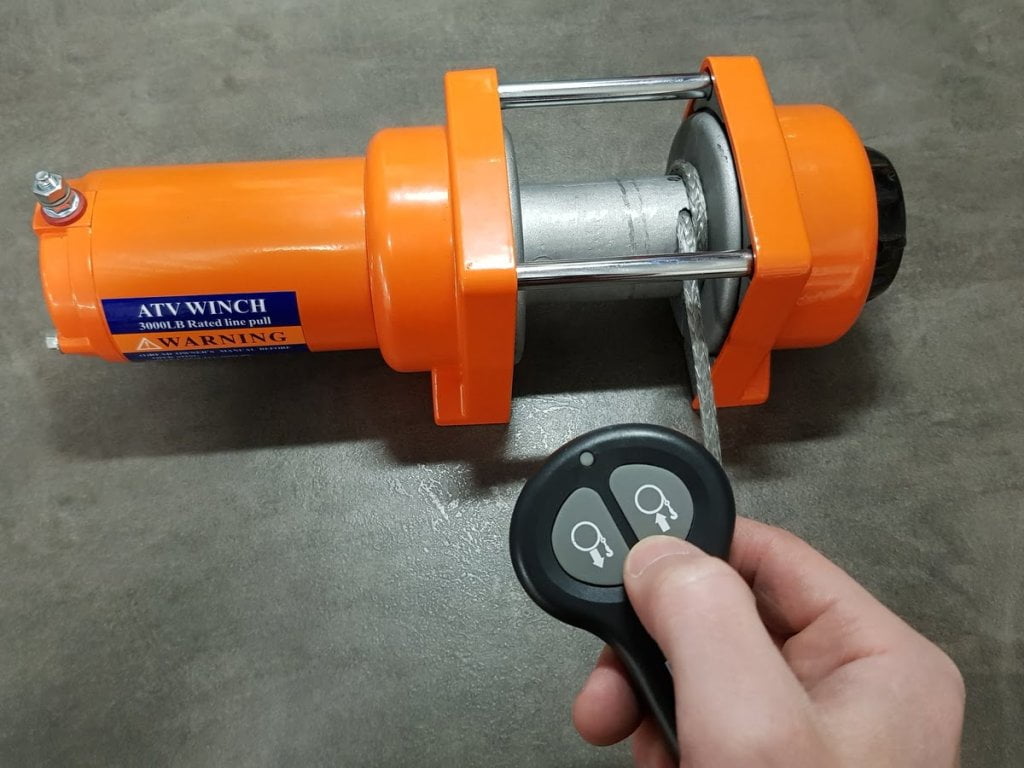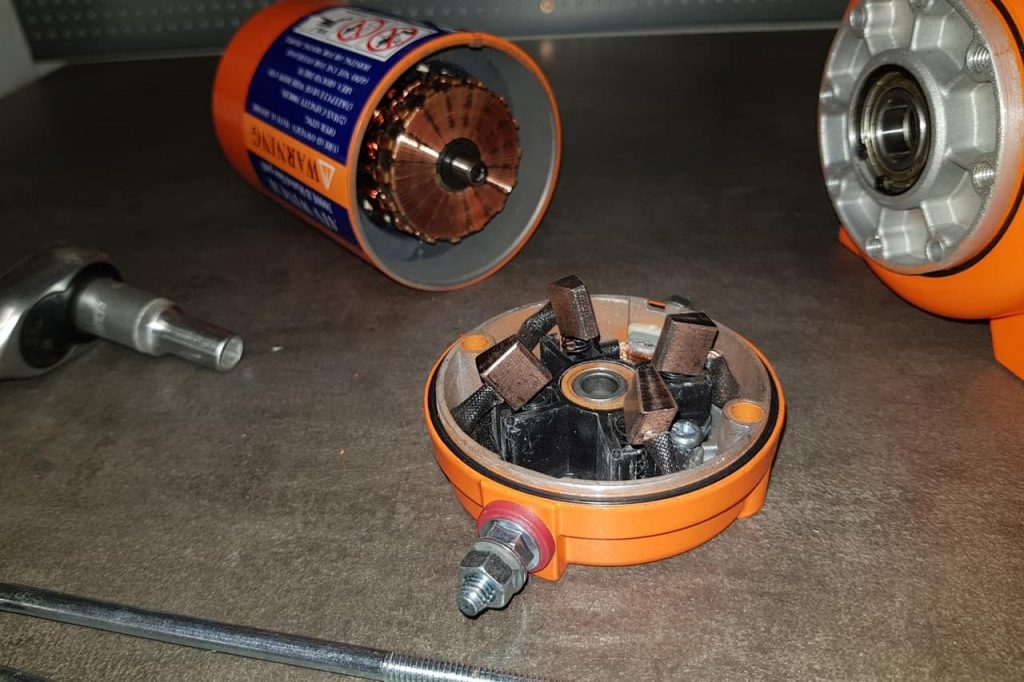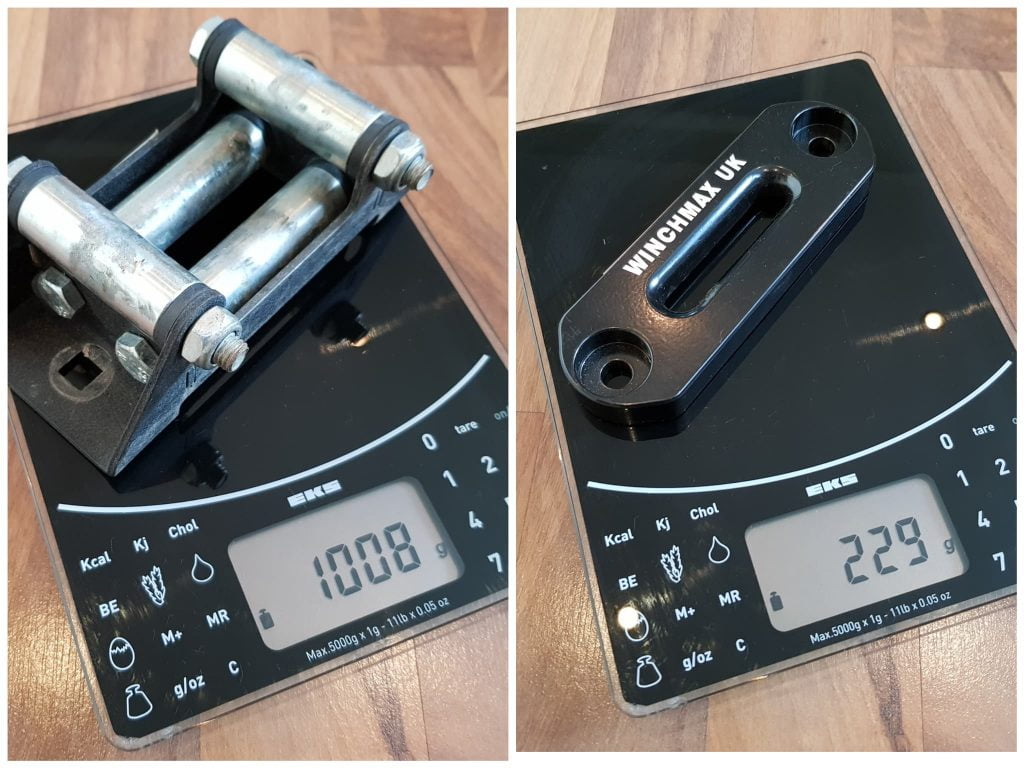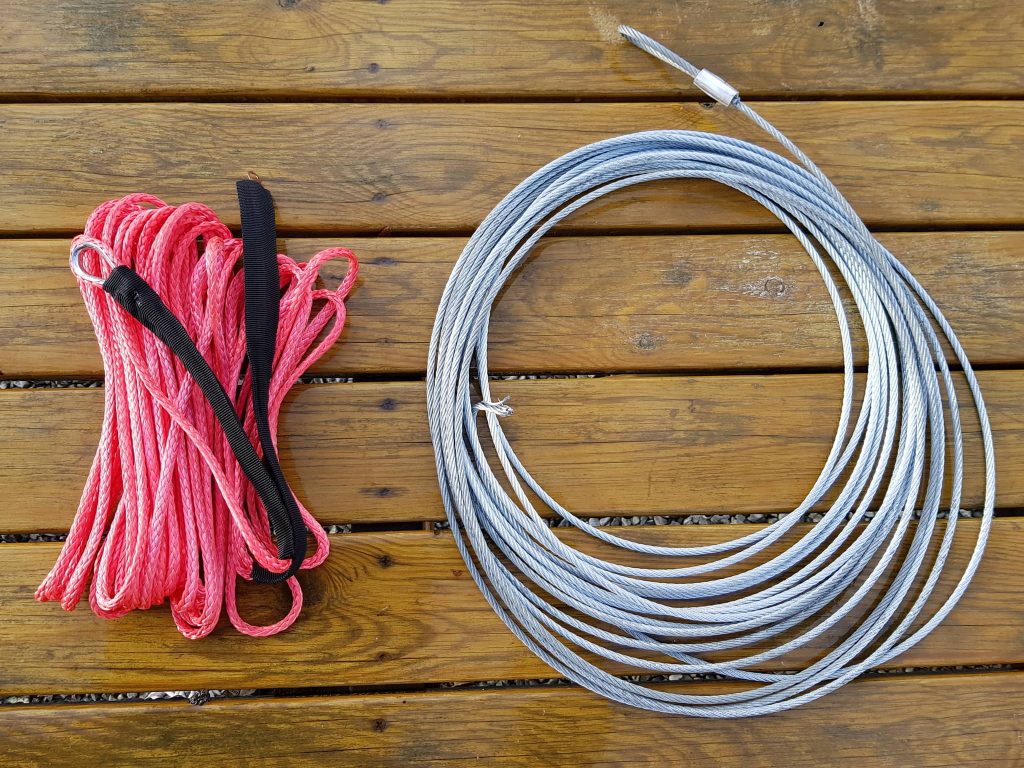You’re miles from the trailhead, stuck axle-deep in mud. No cell service. No backup. What now? If your ATV’s got a winch, you’ve got a way out.
But how exactly does a winch work, what do the different components do, and how do they operate together to make the winch work?
These are some of the things I hope you’ll get a better understanding of after reading this post.
What Is the Purpose of an ATV Winch?
The primary purpose of having a winch on your ATV is for self-recovery when stuck in snow, sand, or mud, to recover another stuck vehicle, or to pull a heavy object towards the ATV.
A winch can turn a stuck ATV from a dreadful and exhausting experience to a short but exciting interruption in your off-road riding adventure.
If you’re still not convinced whether you need an ATV winch, maybe this post can better help you decide.
How Does an ATV Winch Work?
The basic principle of how an ATV winch works is relatively straightforward.
- A winch stores a long rope or cable on a drum, which spools in and out during operation.
- When the operator pushes a button to engage the winch, an electric motor inside the winch makes the winch drum spool the rope in or out.
- As the winch rope spools in, the winch exerts a high force on the rope, pulling whatever the rope is attached to towards the ATV. Whichever object is lightest or offers the least resistance moves.
- When an ATV gets stuck, the rope gets anchored to a solid anchoring point like a tree, and if all goes well, the winch will pull the ATV out of the mud as the powerful winch motor spools the rope back onto the drum.
Let us look at the different components and mechanisms and how they make the winch operate.

Battery
The winch gets its power from the battery. While the ATV’s built-in charging system continuously emits an electric charge, the power output is insufficient to supply the high current drawn from the winch motor.
The battery can provide a high electric current over a short period, but extensive winch use can drain the battery. Allowing the battery to charge back up after a heavy winching session is essential.
Cables & Wiring
Heavy-gauge cables connect the battery, winch solenoid, and winch motor.
Smaller-gauge signal cables run from the handlebar remote switch to the solenoid.
Related: How to Wire an ATV Winch (With Wiring Diagram)
Contactor Solenoid

The contactor solenoid is a small box connected between the battery and the winch motor. Its primary purpose is to control the electric current from the battery to the winch motor without running heavy wires up to the handlebar switch.
As the operator pushes the handlebar rocker switch, a low current signal is sent to the contactor solenoid, telling it where to direct the high current from the battery.
The contactor can direct the current to either side of the motor to make it turn in or out or cut the power to stop the winch.
Handlebar Rocker Switch & Remote

The rider operates the winch from a rocker switch mounted on the ATV handlebars.
The winch has three positions:
- IN: When pressed, the switch signals to the winch to spool the winch rope in and onto the winch drum.
- OUT: When pressed, the switch signals to the winch to spool the winch rope out and off the winch drum
- Release: When the switch is released (not pressed), it signals to cut the power, and the winch goes to its default off position.
Some winches include a wired or wireless remote control, which lets the rider use the winch from a location away from the ATV’s controls.

Remote winch operation can be helpful to ensure the rope spools evenly onto the drum after you’re done winching, especially when you don’t have an assistant.
Winch Mount
When operating the winch at full capacity, it exerts a force ranging from 1,500 to 3,500 pounds or more onto the ATV. To manage this force safely, the winch must be securely mounted to a strong point on the ATV.
Typically, the winch is bolted directly to the ATV frame using a custom mounting bracket and heavy-duty mounting hardware.
Ideally, the winch is mounted at the lower part of the ATV to prevent tipping. The winch can be mounted either front or back, but having the winch in the front is the most common.
Related: ATV Winch Mounting: Upside Down? Truckbed? Hitch? Rack?
Winch Housing
The sealed winch housing contains and protects the winch motor, gears/transmission, and holds the winch drum with the winch rope on it.
A mechanical lever on the housing engages or disengages the winch gears from the winch drum. In the engaged position, the rope pulls in or out when you press the button.
With the lever in the disengaged position, also known as the free-spool position, the winch drum is disconnected from the motor, letting you pull the rope out by hand instead of using power. It saves battery and speeds up setup.
Winch Motor

Most, if not all, ATV winches are driven by an electric winch motor. The motor uses a conventional brushed design consisting of windings, magnets, and brushes.
Depending on winch-rated pulling capacity, the motor typically draws about 20A at no load and 100A to 200A at full load.
Gears/Transmission

The winch motor connects to a set of gears that act like a force multiplier by reducing the speed to increase torque.
While the electric motor is powerful, the gear assembly contributes the most to the winch’s massive pulling power.
Most ATV winches have a transmission with a planetary gear design. A compact gear system that uses multiple small gears rotating around a central gear. It helps multiply force while keeping the winch size small.
The gears are one of the areas where the difference between a high-quality winch and a low-quality winch typically becomes most evident.
Where a high-quality winch may use gears machined in a CNC milling machine that is held together by metal hardware, some lower-quality winches may use less expensive manufacturing techniques like cast powder metallurgy and plastic hardware to keep the gears assembled.
The output shaft connects to the cable drum on the other side of the planetary gear assembly.
Cable Drum

The winch cable drum, usually made of aluminum or steel, serves two primary purposes. Firstly, it stores the winch rope. Secondly, it transmits the force generated by the gear assembly to the winch rope.
The winch-pulling power depends on how many layers of winch rope remain on the drum. The winch is at its strongest with only one layer of rope on the drum, and the remaining pulling power drops with each additional layer of rope, as exemplified in the table below.
Layers of rope on the drum | Remaining pulling capacity in % of rated pulling capacity | Remaining pulling capacity in-lb (example: 2500 lb winch) |
|---|---|---|
1 | 100% | 2500 lb |
2 | 91% | 2275 lb |
3 | 82% | 2050 lb |
4 | 69% | 1725 lb |
5 | 58% | 1450 lb |
Enhanced pulling strength is one of the reasons why it’s advised to unspool as much rope as possible before making a heavy pull with the winch.
Fairlead

The fairlead is a component whose primary purpose is to lead the winch rope properly onto the winch drum and prevent damaging the winch rope from rubbing against the ATV when pulling at an angle.
There are two primary types of fairlead designs:
- Billed aluminum fairlead for synthetic winch ropes.
- Settl roller fairleads for steel winch cables.
Check this post to learn more about the differences between the two designs.
Winch Cable/Rope

ATV winces use a conventional metal wire winch cable or a special synthetic winch rope.
Synthetic ropes offer many benefits over steel winch cables, like higher strength, safer handling, and easier spooling. On the other hand, steel cables are more durable and cheaper but less convenient.
Overall, synthetic winch ropes have become the preferred alternative in the ATV industry, while some winches still use steel cables, primarily due to the lower cost.
I’ve written a detailed article comparing these two types, exploring their advantages and disadvantages.
Winch Hook

The winch hook is attached to the end of the winch rope or cable and is used to attach the cable to the anchoring point or the vehicle being towed.
The hook has a spring-loaded latch that prevents the hook from accidentally becoming unhooked. In addition, it has a hook strap to avoid injuries when unspooling the rope from the winch drum.
Many people use the hook wrong by looping it around the anchoring point and hooking it back onto the winch rope. This mistake can damage the anchoring point and prematurely wear the winch rope.
Check this guide on how to use an ATV winch properly.
Winching Accessories

Besides the above components, which are included when you buy a winch, many people like to supplement their winch with various winch accessories like a tree saver, snatch block, and shackles.
Check this post for useful winching accessories and equipment.
What Are the Different Types of ATV Winches?
While some vehicles use hydraulic winches, most ATV and UTV winches are powered by electricity from the battery.
What separates the different ATV winches on the market can be boiled down to their rated pulling capacity, what type of winch rope they use, and build quality.
Most winch types and brands apply the same basic design principles, while some execute the designs better, resulting in more robust and longer-lasting winches.
A typical ATV winch has a rated pulling capacity between 1500 lbs and 4500 lbs of pulling force.
Check out this guide to learn what size ATV winch you should get for your ATV.
